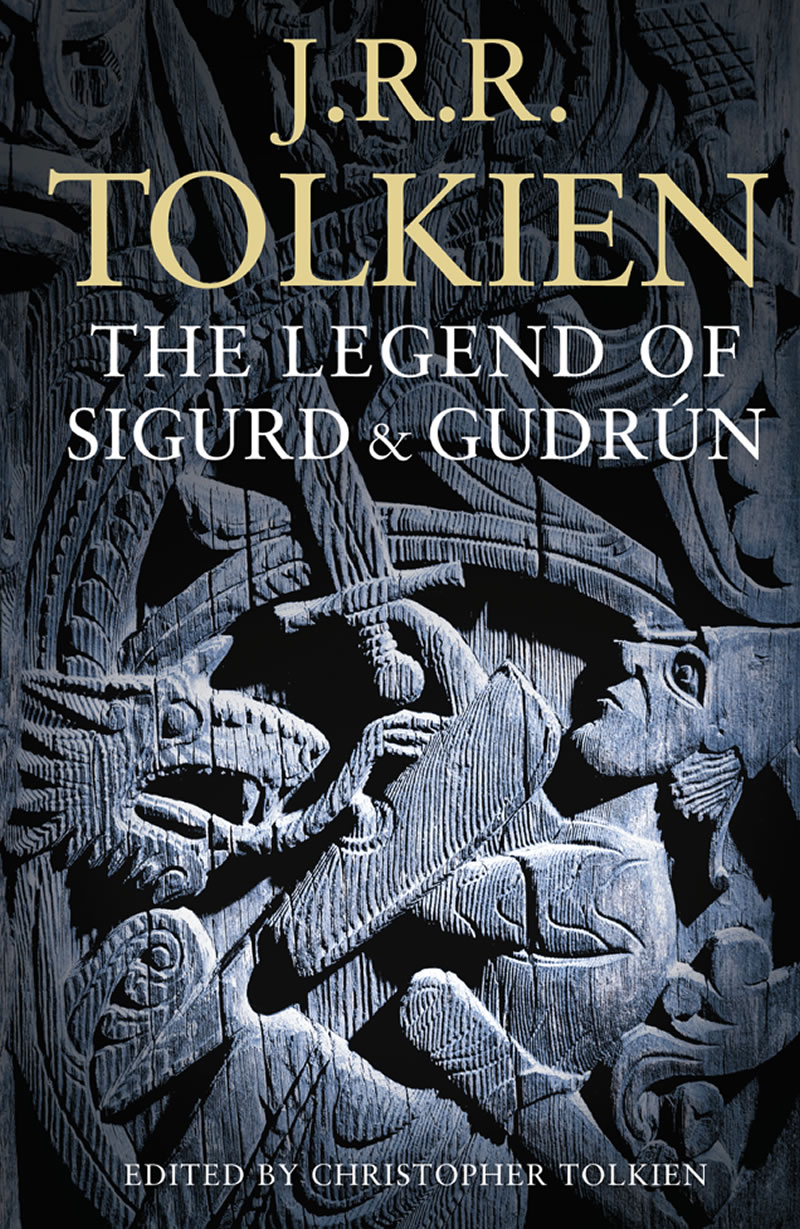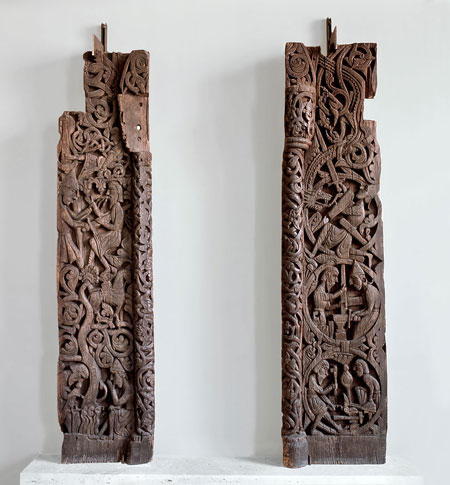The Legend of Sigurd and Gudrun Paperback (16.02.10 by Pieter Collier) -
Comments
If you read and liked The Hobbit and The Lord of the Rings, learned more about tolkien's mythology by reading The Silmarillion or even worked your way through the series of The History of Middle-earth (now being reprinted - read this article). I can imagine that now you want another great reading of Tolkien fantasy? Maybe you should skip this book and go for a copy of Unfinished Tales, since The Legend of Sigurd and Gudrun is something different and can bee seen as a scholarly work.
However if you are into Norse mythology, and have for example already read Beowulf, Sir Orfeo and Sir Gawain and the Green Knight, you will love this book as well. In this book J.R.R Tolkien has recreated a unified Norse mythology, written in English, but following the classic 8 line stanzaic style of the Elder Eddas, the Old Norse poetry form. It really is a treat to get this style of poetry rendered in the common speech. It will not take you long and you feel the urge to speak these poems out loud and get a good feeling how these tales ones were told in the halls of the kings of old.
Extract from the introduction
Many years ago, J.R.R. Tolkien composed his own version, now published for the first time, of the great legend of Northern antiquity, in two closely related poems to which he gave the titles The New Lay of the Völsungs and The New Lay of Gudrún.
In the Lay of the Völsungs is told the ancestry of the great hero Sigurd, the slayer of Fáfnir most celebrated of dragons, whose treasure he took for his own; of his awakening of the Valkyrie Brynhild who slept surrounded by a wall of fire, and of their betrothal; and of his coming to the court of the great princes who were named the Niflungs (or Nibelungs), with whom he entered into blood-brotherhood. In that court there sprang great love but also great hate, brought about by the power of the enchantress, mother of the Niflungs, skilled in the arts of magic, of shape-changing and potions of forgetfulness.
In scenes of dramatic intensity, of confusion of identity, thwarted passion, jealousy and bitter strife, the tragedy of Sigurd and Brynhild, of Gunnar the Niflung and Gudrún his sister, mounts to its end in the murder of Sigurd at the hands of his blood-brothers, the suicide of Brynhild, and the despair of Gudrún.
In the Lay of Gudrún her fate after the death of Sigurd is told, her marriage against her will to the mighty Atli, ruler of the Huns (the Attila of history), his murder of her brothers the Niflung lords, and her hideous revenge.
Deriving his version primarily from his close study of the ancient poetry of Norway and Iceland known as the Poetic Edda (and where no old poetry exists, from the later prose work the Völsunga Saga), J.R.R. Tolkien employed a verse-form of short stanzas whose lines embody in English the exacting alliterative rhythms and the concentrated energy of the poems of the Edda.
— Christopher Tolkien
About the Legend of Sigurd and GudrunIf you want to find out more about the story line, available editions, info on the cover image, etc. please proceed to The Legend of Sigurd and Gudrun FAQ.
Publisher: HarperCollins Publishers Ltd
Publication Date: 1 April 2010
Type: paperback, 384 pages
ISBN-10: 0007317247
ISBN-13: 978-0007317240
Spread the news about this J.R.R. Tolkien article:


